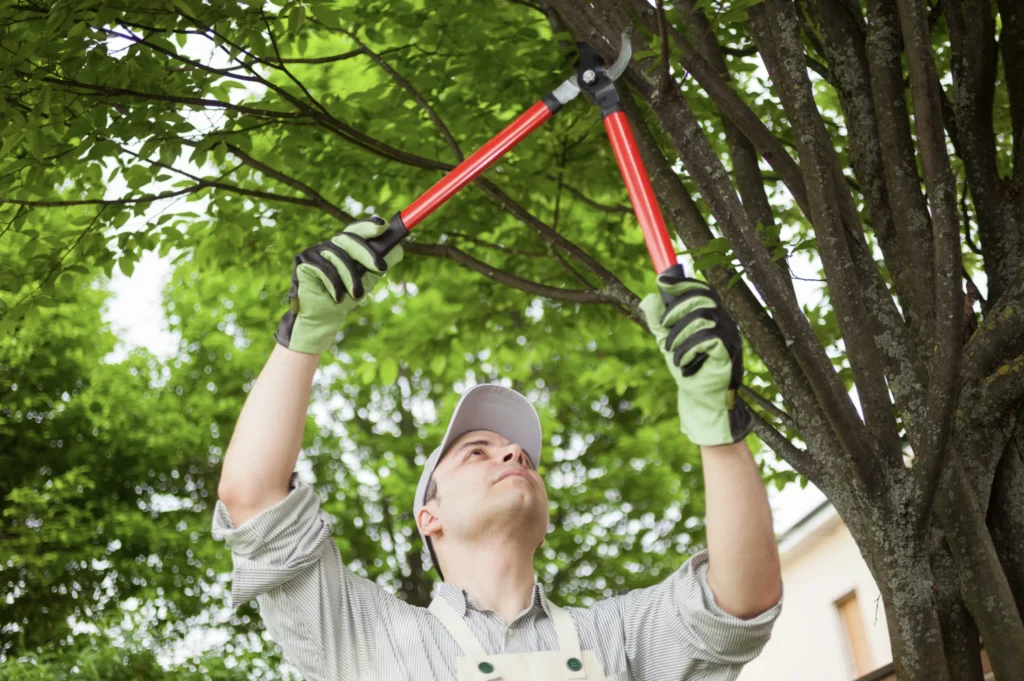Trees are an essential part of any neighborhood. They provide shade, beauty, and environmental benefits. But what happens when a tree’s roots extend beyond its owner’s property and begin to interfere with a neighbor’s land? This is a common dispute in residential areas, and the question often arises: When is it legal to cut roots from a neighbor’s tree?
This article explores the legal boundaries, property rights, and responsibilities involved in tree root encroachment. It covers the conditions under which trimming or removing roots is permissible, along with potential legal consequences, preventive strategies, and real-world case examples.
1. Understanding Property Rights and Tree Ownership

The foundation of tree-root-related disputes lies in property boundaries. Generally, a tree is considered the property of the person on whose land the trunk is located, regardless of where the roots or branches extend. This means that even if the roots of a tree grow under the neighbor’s property, the tree still belongs to the original owner.
However, homeowners also have the right to the quiet enjoyment of their property. This right allows them to take reasonable steps to remove obstructions or nuisances—even if they originate from a neighboring property.
2. The Legal Concept of Encroachment
Encroachment occurs when one person’s property physically crosses into another’s. With trees, this can happen above ground (with overhanging branches) or below ground (with root systems). Roots can cause serious damage by:
- Cracking concrete driveways or foundations
- Clogging sewer lines
- Drawing water from gardens or lawns
- Destabilizing soil structures
In legal terms, tree root encroachment is a form of nuisance or trespass, depending on the jurisdiction. Homeowners affected by encroaching roots may be entitled to remedy the situation, but this must be done within the limits of the law.
3. When It Is Legal to Cut Tree Roots

A. Self-Help Rule (Doctrine of Self-Redress)
In many jurisdictions, the law permits a homeowner to cut tree roots that cross the property line, provided that:
- The cutting does not kill or seriously damage the tree.
- The action is taken within the boundaries of the affected property.
- There was no negligence in the act of cutting.
This is known as the “self-help” rule. It allows property owners to protect their land without needing permission from the tree owner. However, this right is not absolute.
B. Reasonableness and Precaution
Even when self-help is allowed, courts often require the trimming or root removal to be reasonable. If the roots are cut in a way that endangers the tree’s health or causes it to die, the person who trimmed them can be held liable for damages.
Courts will consider:
- The extent of damage caused by the roots
- Whether non-invasive solutions were attempted
- The importance of the tree (e.g., age, size, protected species)
- Whether the person who trimmed the roots consulted a professional arborist
In some cases, local laws or ordinances may prohibit certain actions on protected trees, regardless of root encroachment.
4. Situations That Require Legal Action

While self-help is legal in many places, there are situations where it is better—or even necessary—to pursue legal remedies instead of taking unilateral action.
A. When Trees Are Protected
Some jurisdictions have laws that protect heritage or native trees. Cutting roots from these trees—especially if the act harms the tree—could result in penalties, fines, or even criminal charges. In such cases, property owners must seek approval from a local council or governing authority.
B. If Root Removal May Kill the Tree
If cutting the roots is likely to kill or destabilize the tree, and the tree is healthy and not inherently dangerous, courts often require the affected neighbor to seek court orders or mediated resolution. Taking matters into one’s own hands could lead to being sued for:
- Tree replacement costs
- Diminished property value
- Emotional distress (in some jurisdictions)
C. When the Tree Is on a Property Line
If the tree’s trunk straddles a boundary line, it is considered joint property. In this case, both neighbors own the tree, and neither may legally cut the roots or branches without mutual consent or a court order.
5. Prevention and Dispute Resolution

A. Open Communication
The best way to handle tree root problems is through civil conversation. Alerting your neighbor early and showing evidence of root intrusion—such as photographs or landscaping bills—may lead to a cooperative solution.
B. Mediation and Arbitration
If a mutual agreement can’t be reached, hiring a mediator can help avoid litigation. In some municipalities, local councils offer free mediation services for tree disputes.
C. Legal Notices and Documentation
In cases where formal action is needed, it is essential to keep thorough documentation:
- Photos of damage
- Expert evaluations (e.g., from an arborist or surveyor)
- Written requests or letters to the neighbor
- Repair or landscaping invoices
This documentation is crucial if the dispute escalates to legal proceedings.
6. Case Studies and Legal Precedents
Case 1: Booska v. Patel (California)
In this case, the roots of a tree from one property caused significant structural damage to the neighbor’s driveway. The court allowed the affected neighbor to cut the roots at their property line but ruled that doing so must not harm the tree, as it was otherwise healthy.
Case 2: Lemon v. Kurzawa (Florida)
Here, a neighbor cut roots that ended up killing a large oak tree. The tree owner sued, and the court awarded monetary damages, citing negligence and destruction of private property.
7. Practical Steps Before Cutting Tree Roots

If you’re considering cutting tree roots from a neighbor’s tree, follow these steps:
- Confirm property lines with a land survey.
- Document the damage caused by the roots.
- Contact your neighbor and explain the issue.
- Consult an arborist to evaluate the potential impact of cutting the roots.
- Check local ordinances or HOA regulations.
- If no resolution is reached, seek legal advice or mediation before acting.
8. Conclusion
Cutting roots from a neighbor’s tree is a legally sensitive issue that depends on multiple factors including local laws, the health and location of the tree, and the extent of the damage caused. While property owners typically have the right to protect their land from intruding roots, exercising this right must be done carefully, reasonably, and lawfully.
Avoiding impulsive action and instead seeking professional advice, open communication, and—if necessary—legal mediation can prevent disputes from turning into costly court battles. In the end, respecting boundaries—both physical and interpersonal—is key to resolving root-related conflicts harmoniously.
